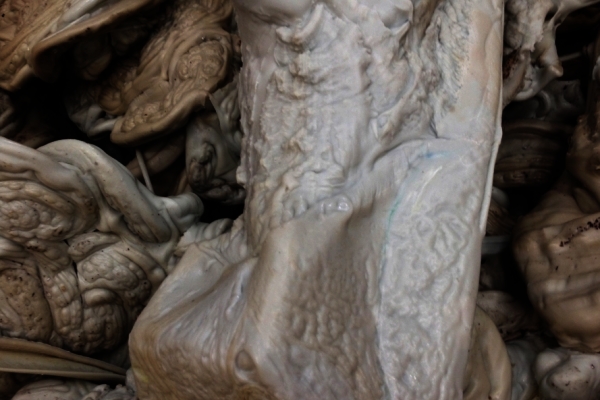Discover Resources by Tags: plastic
 | Up a level |
Number of items: 2.
HDPE plastic waste
Shared with the World by Dr Zoe Laughlin
This slightly green tinted blob is a sample of extruded high-density polyethylene (HDPE) that is produced during the recycling process. HDPE is a type of polymer that is now commonly recycled and is used predominantly in the making of plastic bottles. Bottles arrive at the recycling plant and are passed through a giant shredder that chops them up to produce flakes of plastic. The flakes are then passed through a colour sorter to separate out dyed and non-dyed plastics. The white flakes are then heated to temperatures of over 200°C, which turns them into a molten form and eliminates any contamination. The molten plastic is then extruded, filtered, cut into small pellets, and cooled. These pellets are then sold on to make new food-containers and bottles of various recycled content (commonly between 25% and 50%). It is during this final extrusion process where waste material, such as this sample, is excreted out of the extrusion machine, spilling out onto the factory floor. These blobs of plastic, initially very warm to the touch, are collected and sold on for use within non-food safe grade recycled products. The reason that this blob has a slightly green colour to it is that occasionally a coloured flake makes it through into the white flakes pile. The most common colour of plastic is green, so the resultant white can often take on a slight green tinge. In order to reduce the greening effect of the white recycled plastic, the amount of green dye in British semi-skinned milk bottle lids has now been reduced. Explore HDPE plastic waste on the Institute of Making website: https://www.instituteofmaking.org.uk/materials-library/material/hdpe-plastic-waste.
Shared with the World by Dr Zoe Laughlin


![[img]](https://open-education-repository.ucl.ac.uk//315/1.hassmallThumbnailVersion/1170_Main-600x600.jpg)

![[img]](https://open-education-repository.ucl.ac.uk//315/2.hassmallThumbnailVersion/1170_Detail-600x400.jpg)


